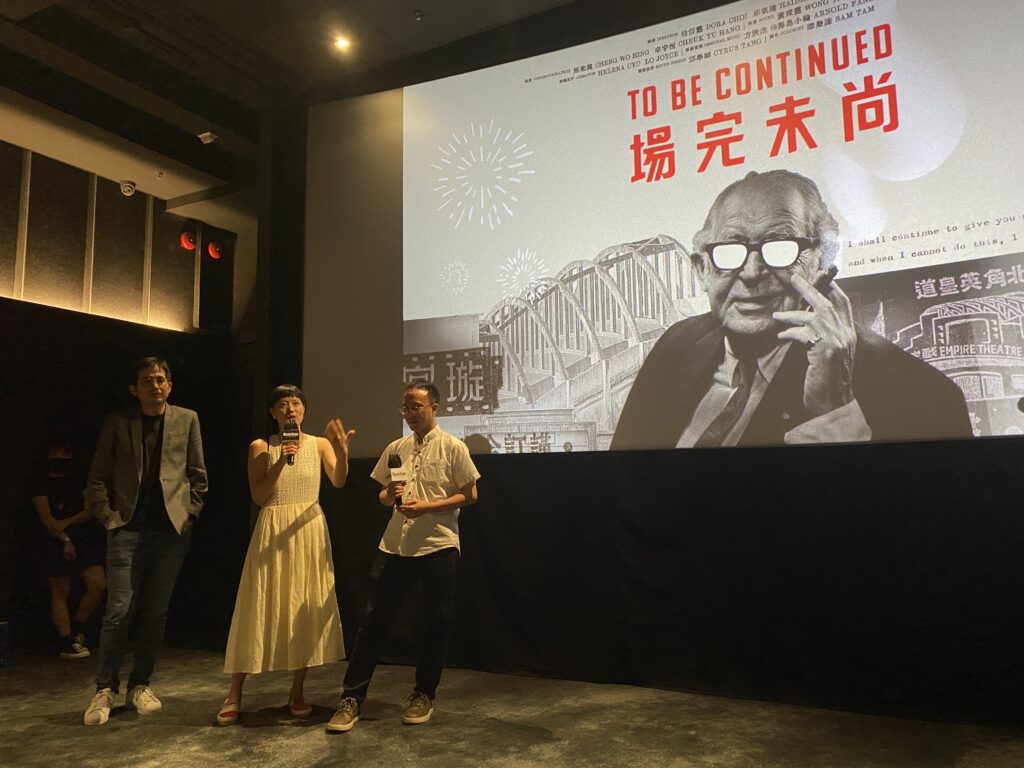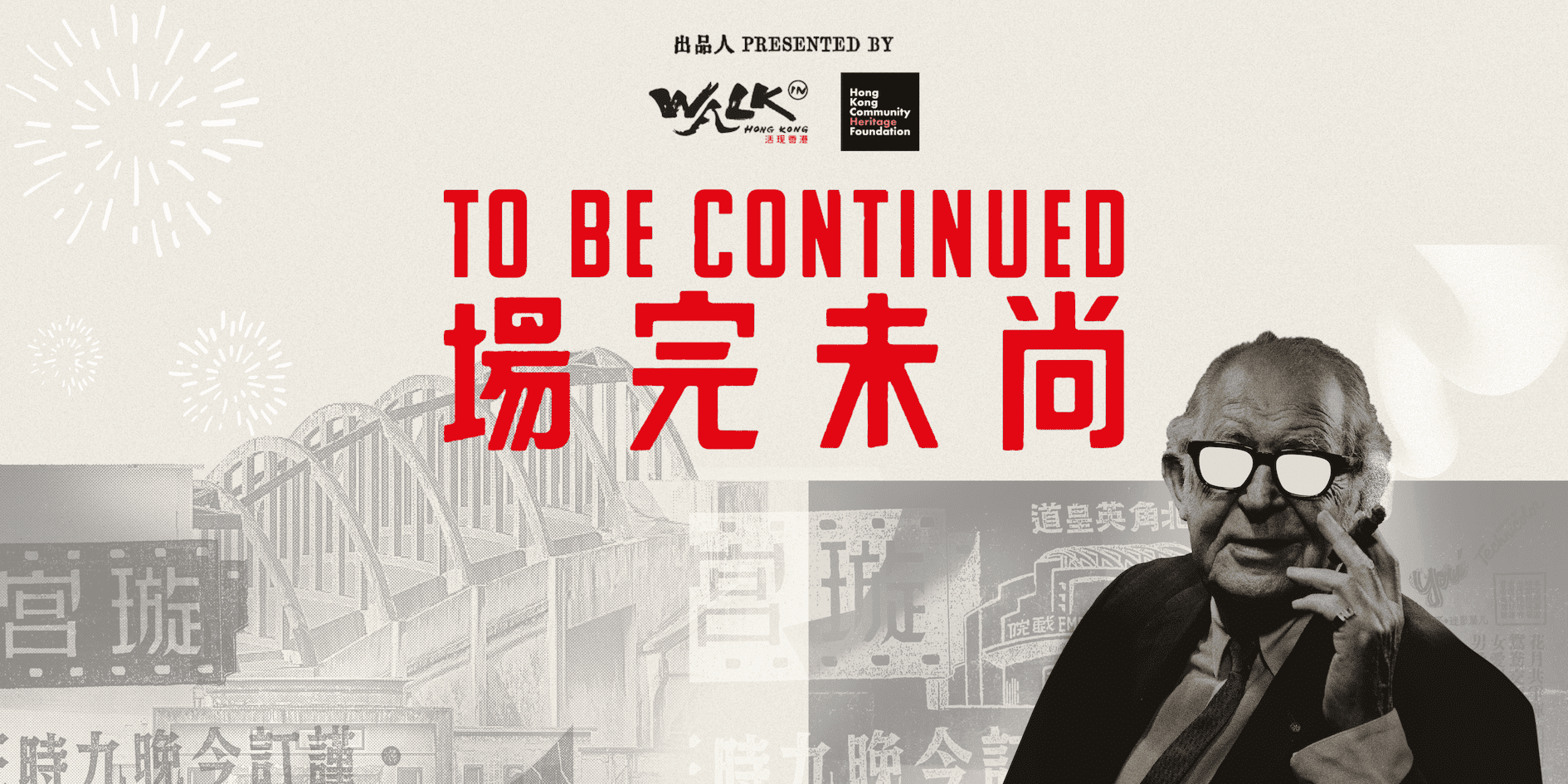
The film “To Be Continued,” co-produced by Walk in Hong Kong and Hong Kong Community Heritage Foundation, premiered at the Hong Kong International Film Festival in April 2023. (Click here to watch the movie trailer). It tells the story of Harry Odell (1896-1975), an impresario and an era of Hong Kong. Five years ago, Haider and Dora, the co-founders of Walk in Hong Kong, decided to create a documentary. We interviewed the two directors, and asked them to share some behind-the-scenes stories about the film.
Walk in Hong Kong: W
Dora: D
Haider: H
W: Now that the film has been out for over two months, did you find the audience’s response to be beyond your expectations?
D: It was way beyond our expectations! Harry Odell is a character from a bygone era – “a white man, a foreigner, an old man, not handsome,” completely contrasting with the popular traits of the new generation of Key Opinion Leaders (KOLs). Initially, we had no idea how to “sell” this character! Perhaps it was because we had a strong sense of self-awareness that we realized the need to establish a connection with the contemporary context and ensure that everyone understands what we’re conveying, aiming for resonance with everyone.
We initially thought the film might not be well-received, but we were pleasantly surprised by how much people loved it! I think the main credit goes to Haider! (smiles)
H: I think the real credit goes to Dora, for coming up with the storytelling approach of a “detective story.” Others have praised the performance of me being the male lead, but I was just being myself. In fact, I never had any intention of appearing on screen. Initially, I wanted to find someone else to tie the whole story together. I considered having Hins Cheung as the voiceover guide and even thought about having Uncle Siu portray Harry Odell speaking in English, but in the end, those ideas were not implemented. In the later stages, I realized that since I was the person most familiar with and fond of Odell, it was only natural for me to narrate the story, the easiest and most authentic choice. The resulting effect was that I saw many people online appreciating the genuinity of our work, something that money can’t buy.
W: During the production of this film, did you encounter any memorable experiences or difficulties?
D: Sometimes, we felt like Odell was “manifesting” himself! For example, we only had audio archives from Hong Kong Radio and some old newspaper clippings, lacking visually engaging footage, which made it feel a bit dull. However, during the fifth wave of the COVID-19 pandemic in Hong Kong, Odell’s grandson suddenly found a treasure trove of home videos that we could use in the documentary. It greatly increased the presence and authenticity of Harry Odell as a character.
Another example is the serendipitous encounter with Rigo, a person deeply connected to Odell. We had found some individuals with a connection to Harry Odell, but it was only in the late stages of the film production that we found Rigo, who had actually worked for Odell. Everything fell into place perfectly and at the right time.
H: In the film, there are many historical clips that bring 1950s Hong Kong back to life in front of the audience. These clips were authorized for use by an elderly Dutch gentleman named Michael Rogge. He lived in Hong Kong in the early 1950s and used to commute to work in Central wearing a suit. At that time, he had a camera, and even though he was busy with work, he would take time on Sundays, his day off, to wander around and capture the social landscape of Hong Kong. After the Shek Kip Mei fire, he filmed the aftermath, as well as the squatter areas and typhoon shelters, documenting the daily life of Hong Kong society.
Those films have actually been digitized and uploaded to YouTube, and I have seen some of them online. So, I mustered up the courage to email the owner of the videos, not even knowing if the filmmaker was still alive. It was a strange twist of fate that Rogge quickly replied, saying that he remembered Harry Odell and even won a photography contest organized by Odell! Rogge is now 93 years old and still full of spirit!
W: What are your expectations for the future of this film?
D: We simply hope that more people can see it and that everyone can find something meaningful or gain some energy from the film.
H: After screening for over two months, we have learned more about new stories, which has enriched our understanding and experience. Many people have asked us if we will make a sequel or write a book, but Dora and I are more interested in conducting workshops. For example, we could teach techniques for researching archives and share our methods and experiences with using such data. We can also discuss with everyone how to learn and utilize these skills for various projects, such as researching the history of one’s own home or community stories. It’s like planting a seed, getting people involved and engaged so we could continue our city’s story. Just like “To Be Continued”!
Postscript:
If not because of the emergence of Walk in Hong Kong ten years ago, there might not be the conservation movement for the State Theatre. The directors describe this film as a love letter to Hong Kong, not only telling the story of an old building and an individual but also narrating the story of an era.
A decade has passed, but Walk in Hong Kong’s journey is far from over. In the next article, the co-founders of Walk in Hong Kong will join everyone in reflecting on the past, looking towards the future, and sharing the profound moments of the past ten years.
